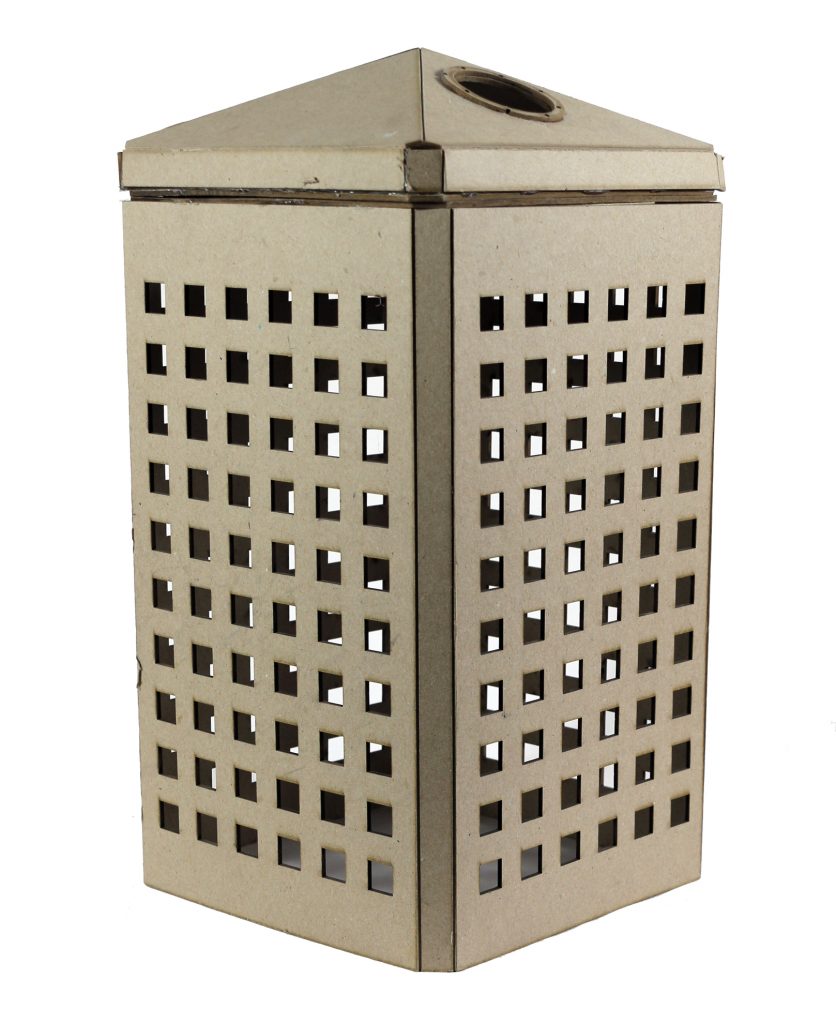Ian Dryden, litter bin, street bin, bin, rubbish, waste, industrial design,
Summary
Most of us likely spend little time considering the outdoor furniture and fixtures that ease our encounters with public space and enrich our experience of the city streets and parks. But industrial design at the City of Melbourne has long been recognised as a discipline essential to maintaining the quality of our urban space and to shaping the identity of the city. It is a discipline that travels in tandem with social, urban and public policy, with design outputs both responding to and reflecting changing priorities.
The Art and Heritage Collection holds a selection of the many technical drawings made by the City of Melbourne industrial designers, documenting examples that can be observed throughout the central city. As well as the drawings, the collection also holds this cardboard and masking tape maquette of an 80-litre litter bin designed for the central city in 1991. The bin was originally manufactured for placement along Swanston Street, but it was soon rolled out on footpaths throughout the municipality.
The bin’s contemporary design, with its well-ordered square perforations, owes something to the aesthetics of Scottish early modernist designer Charles Rennie Mackintosh. But this perforated ornamentation also references something far closer to home, representing the Hoddle grid, the streets of which structure central Melbourne and place host to the bin. This reference to the layout of the central city is also evident in the butt bin designed a few years later, a companion created to service smokers when legislation banned their habit from enclosed dining and work spaces. The 1991 litter bin was replaced several years later by the large litter bin design you see on the streets today, essentially a ‘frame’ to hold a wheelie bin that can be easily emptied with the help of the automated arm of the rubbish truck.
